Natural beauty retouching is all about enhancing without overdoing. Forget harsh edits, modern techniques aim to preserve real skin texture and facial features. Use dodge and burn for soft contouring, soften skin while keeping pores visible, focus on the eyes for subtle impact, and adjust skin tone gently without over-whitening. In this post, DIGI-TEXX will cover 7 essential tips to help your retouching stay natural and non-destructive.

Common Mistakes in Beauty Retouching
Natural beauty retouching usually goes awry when changes are too heavy-handed. Old mistakes are over-smoothing the skin, overly whitening teeth and eyes, and removing obvious features such as freckles, birthmarks, or fine wrinkles – all those things that make an individual natural.
- Over-smoothing the skin: Employing tools such as blur or frequency separation too aggressively has the effect of removing natural texture from the skin and making the subject look plastic or fake.
- Erasing natural details: Freckles, birthmarks, and lines give character and life to a portrait. Erasing them unnecessarily might give a flat, overly retouched appearance.
- Neglecting facial anatomy: Natural beauty retouching should emphasize—not flatten—the bone structure. Over-editing might skew or give the face a flat appearance.
- Uniform skin tone matching discs: The inability to equilibrate the skin colors across face, neck, and body causes unnatural color contrast that breaks the illusion of reality.
- Saturating colors excessively: Excessive saturation of colors will lead away from the subject and cause the image to appear unnatural or processed.
- Inadequate white balance: Inadequate color balance will produce unnatural-looking skin tones or color casts incompatible with the initial lighting arrangement.
- Over-editing highlights and shadows: Shadows and highlights characterize a face. Over-changing them or eliminating them makes the portrait look flat, undefined.
- Over-whitening of teeth and eyes: Whitening must be discreet. Over-whitening provides an unnatural shine that leads the viewer’s attention away from the larger picture.
- Distracting backgrounds: Not cleaning up or simplifying the background has the potential to divert attention away from the subject, even if the retouching itself is perfect.
- Over-sharpening the image: Sharpening will show detail, but too much will add noise and harshness, particularly in skin tones.
- Not paying attention to small details: Small details such as lip texture, baby hairs, or veins may be neglected but will silently affect the realism and quality of the retouch.
- Not backing off sometimes: Editing too close-up without backing off sometimes can result in edits that are unrealistic when viewed full-size.
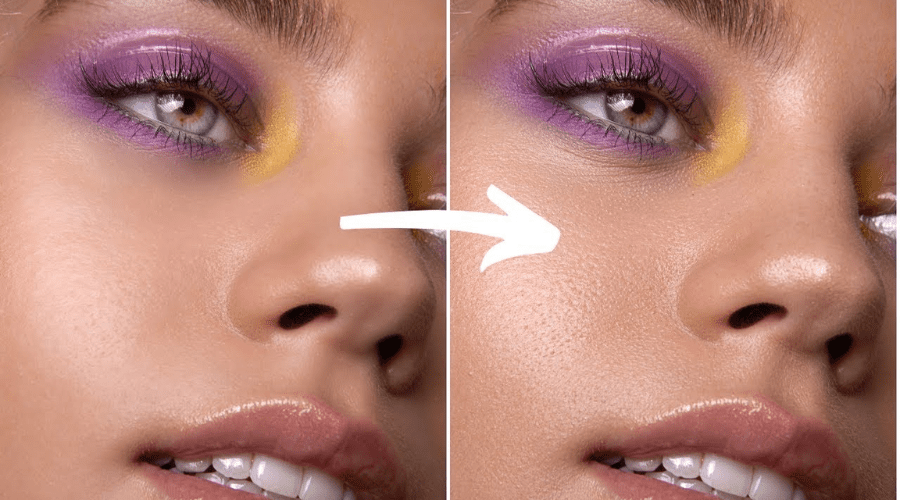
Natural beauty retouching usually goes awry when changes are too heavy-handed
8 Natural Beauty Retouching Tips You Should Know
Natural beauty retouching is something that you have to do to amplify your subject without losing the natural look. If you want to produce elegant but natural-looking portraits, here are the 8 tips to help you balance well between natural and subtle adjustments and dramatic effects.
Use dodge and burn for subtle dimension
Dodge and burn has been a standard method of natural beauty retouching for years, appreciated for its power to smooth skin without losing natural texture. It is the reverse of blurring or smudging, instead playing with exactly controlled light and shadow to gradually soften blemishes, wrinkles, and areas of tonal variation, without losing detail within the skin.
To achieve a soft, credible finish in natural beauty retouching, one should ideally work at a sensible level of zoom. This forces artists to be uncertain about the general balance of light and texture in the image, without getting too hung up on flaws that might not even be perceivable at average view sizes. Close-ups should only be used in extreme cases, such as macro beauty shots or high-detail commercial work.

Dodge and burn has been a standard method of natural beauty retouching
Soften skin without blurring natural texture
Even skin is a common objective in retouching, but the tendency is to overdo it and remove the soft texture that makes skin appear natural. Excessive application of tools such as blur filters or extreme frequency separation can make skin appear artificial and plasticized in contradiction to the standards of natural skin retouching.
A more effective method is to apply low-opacity methods—such as frequency separation with restraint, or texture-saving techniques such as dodge and burn—to maintain a minimum of distractions yet retain visibility of pores and minute details. The objective is not to have every square inch flawless, but to soften gently without removing what makes the skin appear naturally lovely.
Keep retouching focused on the eyes
Natural skin retouching requires a light hand when retouching the eyes. Too much brightening or oversaturation here will rapidly lead to unnatural, doll-like eyes that undermine the realism of the portrait. Far too many hobbyists are tempted to over-bulge the eyes, but restraint is becoming. Bleaching the whites of the eyes or brightening the color of the iris can be effective, as long as it’s applied sparingly to appear clean and convincing.
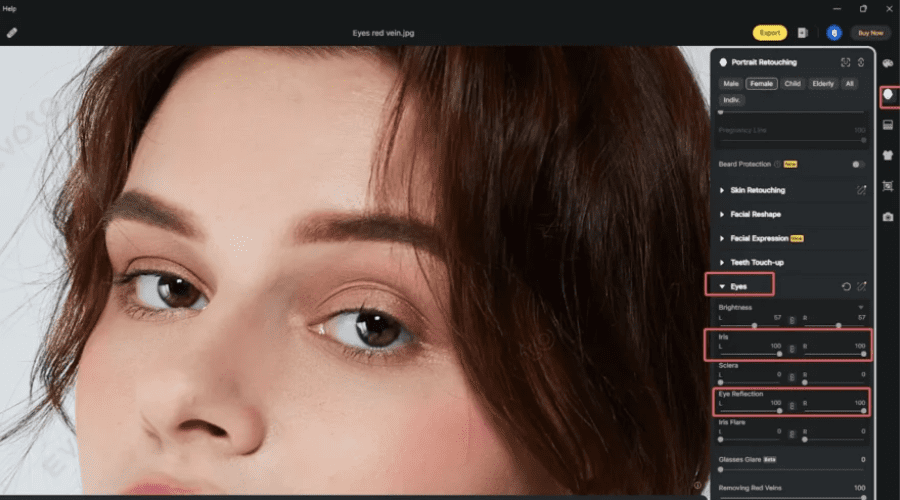
Natural skin retouching requires a light hand when retouching the eyes
Correct skin tone without over-whitening
With natural beauty retouching, there is generally the urge to erase any tiny shadow or highlight, particularly if they do appear slightly harsh or distracting. However, overdoing it on correcting them will cause the skin to appear flat, plastic, and artificial.
A better approach is to retain natural light and contour where feasible, as it removes dimension and adds depth to the face. Optically, getting balanced shadow and highlight should ideally start in-camera so that there is less reliance on heavy correction in post-processing.
Don’t overcorrect shadows and highlights
One of the most frequent makeup retouching errors is attempting to remove all the little shadows or highlights from the face, particularly when some of the spots of light appear a bit ugly or distracting. Although it may be a means of making the picture ideal, it usually steals the photograph of its natural depth and makes the skin plastic or two-dimensional.
With natural beauty retouching, soft light and shadow play a large role in rendering things real. Rather than eliminating them altogether, it is wise to manage them on the shoot itself, where lighting can be molded more suitably. Acquiring it right in-camera eliminates the need for over-correction down the line and keeps the outcome in post, looking real.
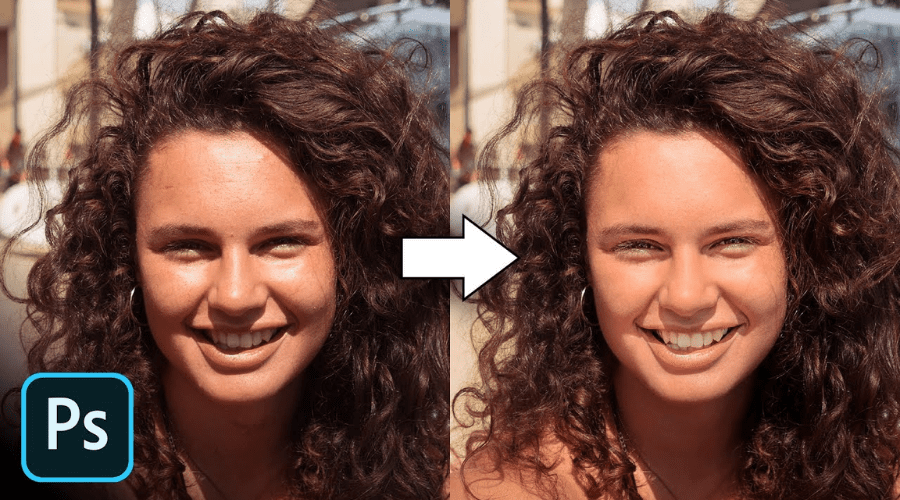
Don’t overcorrect shadows and highlights
Be gentle around the under-eye area
This is a part that the majority of neophytes would normally find themselves wanting to retouch too much or even cut out. Cutting out or retouching it, though, would inadvertently remove a subject’s inherent beauty and personality—something that is to be maintained while carrying out natural beauty retouching.
A better way is to softly lighten the area and eliminate small makeup wrinkles or folds using healing brushes. Past that, it’s best not to touch the texture, to provide the finished picture with a sense of character and reality.
Don’t remove all freckles, moles, or natural marks
When retouching natural characteristics, the elimination of too many freckles or moles decreases a portrait considerably in its realism. Not only are they static features of an individual’s face, but they also form part of his or her uniqueness and character. Retouchers seeking a natural outcome should generally never eliminate such details unless requested to do so. Retention of such finer naturally formed details maintains the integrity and realistic nature of the resulting photograph.
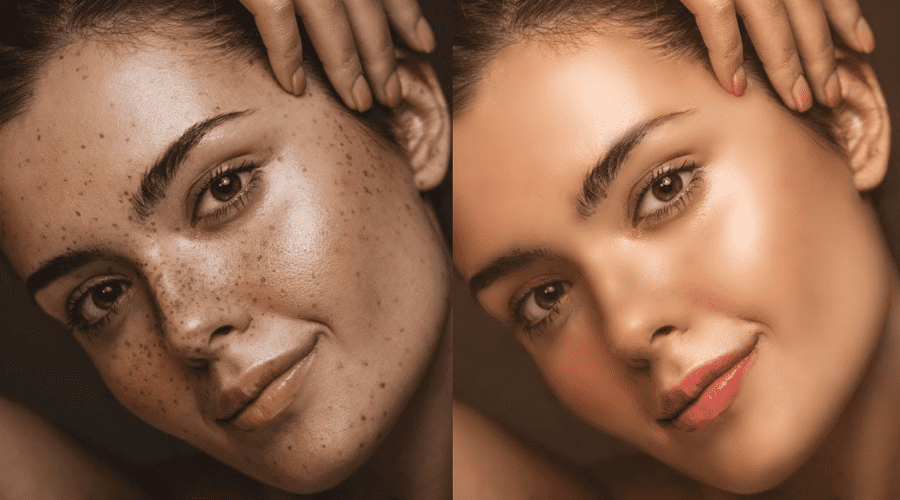
Elimination of too many freckles or moles decreases a portrait considerably in its realism
Keep edits light and consistent across the image
It is easy to become enthused with correcting one area of a portrait, like the face, without necessarily forgetting others, like the neck, shoulders, or hands. This could lead to saw-toothed results that seem discombobulated and over-retouched in one or more areas. With natural beauty retouching, consistency is key to maintaining a believable and elegant look.
Light, gentle strokes throughout the image enable all elements to get along well. Whatever you’re doing to skin tone, texture, or color, try to do it with equilibrium to respect the lighting and mood throughout the photo. Even-handed, light retouching creates the end product to have a sense of cohesion and realism.
Tips to Keep Edits Subtle and Real
To achieve a polished yet realistic result, natural beauty retouching must be addressed with intention and delicacy. Rather than believing bold editorial impacts, focus on light touch-ups that respect the original tones, lighting, and texture of the image. These six guiding principles keep your edits clean, consistent, and natural-looking:
- Make small adjustments, not sweeping revisions: Minor adjustments—like adjusting exposure in a small range or decreasing highlights by a shade or two—can be a great deal. Sweeping changes are likely to lose the original spirit of the portrait and end up looking painstakingly labored.
- Let shadow and light do their work: Avoid trying to tweak every shadow and highlight. These factors provide depth and definition to the face. Tinkering with them excessively will flatten the photo and break the illusion of reality that natural beauty retouching is trying to maintain.
- Employ HSL and tone curves sparingly: Tone curves assist in controlling an image’s mood and contrast, while the application of HSL is used to control color with great accuracy. Employed lightly, they may smooth out skin tones and shift colors without producing jarring or unnatural-looking transitions.
- Selective adjustments with localized corrections: Rather than applying global changes, employ masks, radial filters, or adjustment brushes to apply targeted adjustments. You can subsequently correct only where necessary, such as lightly pushing shadows underneath the eyes or lowering highlights on the forehead.
- Be consistent throughout the whole image (or set of images): Do not concentrate on one area of the image, but leave others behind. Ensure the adjustments are going smoothly from face to neck and hands to background. When editing a set, attempt to have a consistent look in all images.
- Experiment, edit, and ask for opinions: Test out different ways and programs, but then back off. If it’s overdone, tone it back. Presets are a good starting point, but each photo is unique. And in uncertainty, asking someone else will help you judge more objectively.
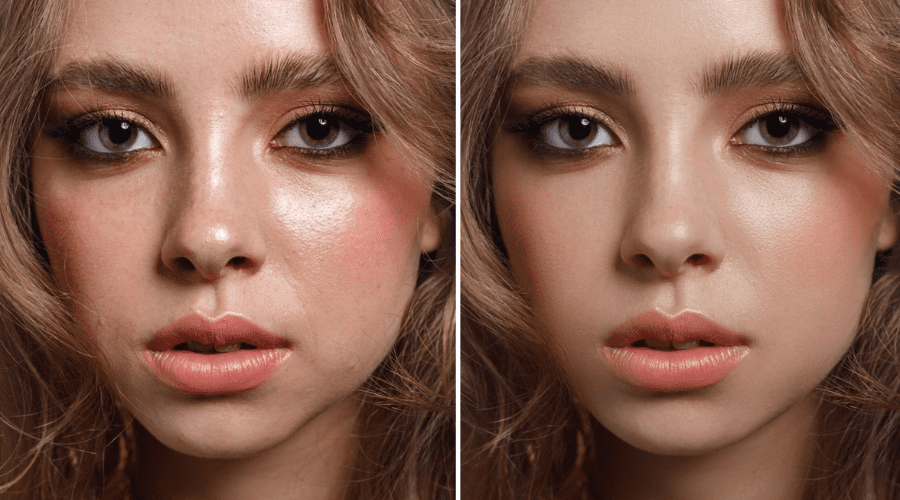
Natural beauty retouching must be addressed with intention and delicacy
Natural beauty retouching is all about enhancing what’s already there, subtly refining skin, light, and color while preserving the subject’s unique features and natural charm. By applying these thoughtful techniques with a light hand and a keen eye, you can achieve stunning results that feel both flawless and authentic. Remember, it’s not about perfection, it’s about presence, personality, and balance.
At DIGI – TEXX, we understand the value of quality and precision in every visual. Whether you’re a creative professional or a brand seeking high-end beauty retouching and post-production services, our expert team is here to help you bring your vision to life, seamlessly and naturally. Explore our services and discover how we elevate images while keeping authenticity at the heart of every edit.
=> Explore more:


